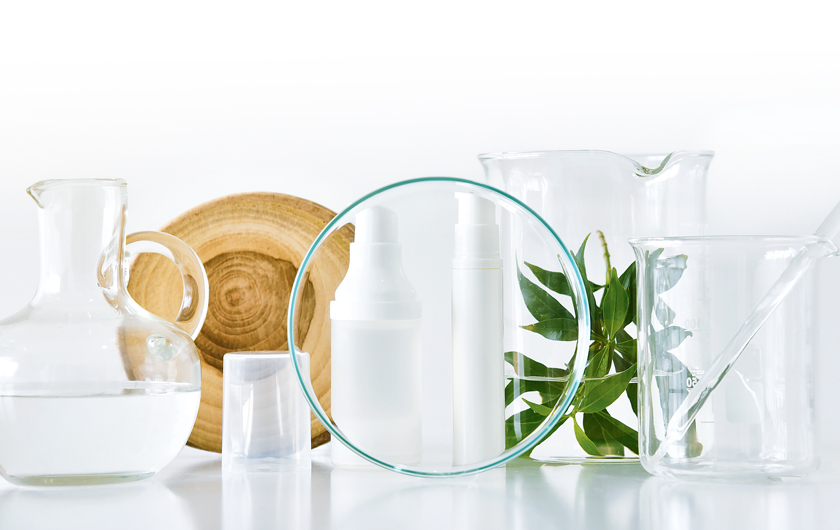Often underestimated as a skin-care step, facial cleansing is one of the keys to a healthy complexion
By Mariève Inoue
You may not give it much thought, but washing your face is important because your skin acts as a barrier.
“It’s important to cleanse it and remove any excess dirt from its surface,” explains David Durand, a Doctor of Pharmacy and the CEO of NAOS North America (Bioderma division). If you don’t wash your face regularly, everything that accumulates on your skin, including pollution particles and makeup residue, can cause “localized micro-inflammations that lead to increased sensitivity.” It can also disturb the way your pores function, resulting in red bumps or blackheads.
Cleansing your skin also ensures that it’s ready for any subsequent skin-care products. “You can use the best cream, but if your skin isn’t fit to absorb it, the formula probably won’t be as effective,” Durand explains. The same applies to makeup: “Certain elements, such as oil produced by the skin, can alter the makeup’s wear time or appearance,” says David Vincent, a makeup artist with Lise Watier International.
On the other hand, if you cleanse too often or use a product that’s too harsh, you can cause an imbalance in your skin. The skin’s acid mantle (also called the “hydrolipid barrier”) is made up of water and oil, and seals in moisture. “If you use soap-based products or formulas with too high a pH level, you risk damaging this protective film and causing the skin to produce too much oil,” Durand says. As a result, you’re likely to want to wash your face even more often, creating a vicious cycle.
The ideal cleansing frequency for your skin depends on several things. If you don’t wear makeup and your skin is dry or dehydrated, once a day may suffice. On the other hand, if you frequently wear makeup, have oilier skin, and/or live in a city where the air is polluted, washing your face twice a day is recommended.
Get the Most From Your Cleanse
• Wash your hands before you start. “It sounds silly, but it’s a crucial step for ensuring that the bacteria and germs on your hands don’t end up on your face,” says Sylvain Harbec, the Lise Watier chief principal of learning and content.
• Proceed gently. A good cleanser or makeup remover shouldn’t require a lot of rubbing to be effective. “People don’t trust their products enough,” Vincent says. “They’re often under the impression that they need to apply a lot of pressure.”
• Adjust the water temperature. “Using hot water can contribute to dissolving your skin’s acid mantle,” Durand warns. This can cause dryness and sensitivity. Durand suggests instead using lukewarm water to begin and finishing with cold water.
• Use a separate towel for your face. “If you suffer from eczema or rosacea, or have sensitive skin, you should change your towel after every use,” Harbec says. Once you’ve rinsed your skin, pat it dry—no rubbing required.
Asian Inspirations
As Korean and Japanese beauty regimens—commonly referred to as “K-beauty” and “J-beauty”—have gained popularity, a new wave of cleansing oils and balms has cropped up on the market. “Double-cleansing” is a key concept in Asian skin care: “In Korea, we are told from a young age that cleansing sets the tone for the rest of your skin-care routine,” says Christine Chang, a co-founder of the K-beauty-inspired brand Glow Recipe. “An oil-based cleanser first removes makeup and sunscreen, while a water-based foaming cleanser removes residual dirt or grime, for a complete cleansing routine.”
Choose a Cleanser
Consider your skin type (normal, dry, combination, or oily) when selecting a facial cleanser. “Also think about what kind of textures you enjoy and whether you prefer to rinse the product off or not,” Harbec advises. Some formulas provide additional skin-care benefits. “A cleanser may have soothing, purifying, or hydrating properties, for example,” Durand says.
Bi-Phase (Dual-Phase) Makeup Remover
What it is: A product with a water and an oil phase, which easily dissolves makeup, including waterproof formulas.
Whom it’s for: Anyone looking for fast, effective makeup removal.
How to use it: Shake the bottle to mix the two phases together, pour a bit of product on a cotton pad, and then wipe the skin gently.
Foaming Cleanser
What it is: A gel or cream formula that transforms into a lather when mixed with water. “These cleansers can be drying,” Harbec cautions.
Whom it’s for: People with normal, combination, or oily skin.
How to use it: Use wet hands to create a lather; massage onto your face and then rinse well.
Oil-Based Cleanser
What it is: An oil or balm that easily dissolves makeup, sunscreen, and other hard-to-remove products in a single step.
Whom it’s for: Everyone. A great option if you tend to wear a lot of makeup or favour long-wear formulas.
How to use it: Massage onto dry skin with dry hands, using a circular motion; add a bit of water to emulsify it and then rinse well.
Micellar Water
What it is: A no-rinse solution that feels like water and contains micelles—molecules that capture dirt once the product is applied to the skin.
Whom it’s for: Everyone. This is also an ideal product if you have sensitive eyes.
How to use it: Soak a cotton pad in micellar water and place it on one eye while applying light pressure. “Count to five, and then wipe the cotton pad from the inner corner to the outer corner of your eye, turn it over, and repeat,” Durand says. Don’t rub.
Cleansing Milk
What it is: An emulsion that gently removes makeup. New micellar milk solutions also leverage micellar technology by offering a richer texture.
Whom it’s for: People with normal to dry skin who prefer to remove their makeup without rinsing.
How to use it: Follow directions as for micellar water.
Cleansing Gel
What it is: A gel that cleanses the skin, leaving it feeling refreshed. It also removes light makeup.
Whom it’s for: People with normal, combination, or oily skin.
How to use it: Apply to wet skin, gently massaging with wet hands; finish off by rinsing.
Cream Cleanser
What it is: A creamy formula that cleanses and removes light makeup while moisturizing the skin.
Whom it’s for: People with normal to dry skin.
How to use it: Apply to wet skin, massage gently, and then rinse.
Cleansing Wipes
What they are: Single-use wipes soaked with a makeup-removing and cleansing solution. Despite being practical when you’re on the go, people with sensitive skin should be wary. “Wipes can irritate certain skin types if used daily,” Harbec says.
Whom they’re for: People who want a fast, practical makeup remover that doesn’t require rinsing.
How to use them: Wipe skin gently. To remove eye makeup, press onto eye area and wait a few seconds before wiping.
Photo: Marc-Antoine Charlebois.





